ELECTRIC, WITH AN EDGE
Liquid-filled transformers are high-performance electrical equipment for high voltage applications. What is the 2500 kva medium voltage oil filled transformer? what’s different between it and dry type transformer? how do choose the best oil filled transformer manufacturers?
Daelim as the best oil filled transformer manufacturers, they product the Liquid Transformers are highly efficient and ensure safety for the users. Not only does Daelim have 15 years of valuable experience as the oil filled transformer manufacturers, but Daelim also constantly complies with necessary international standards. This is to assure the customers that Daelim’s products are safe for use and of high performance and quality.
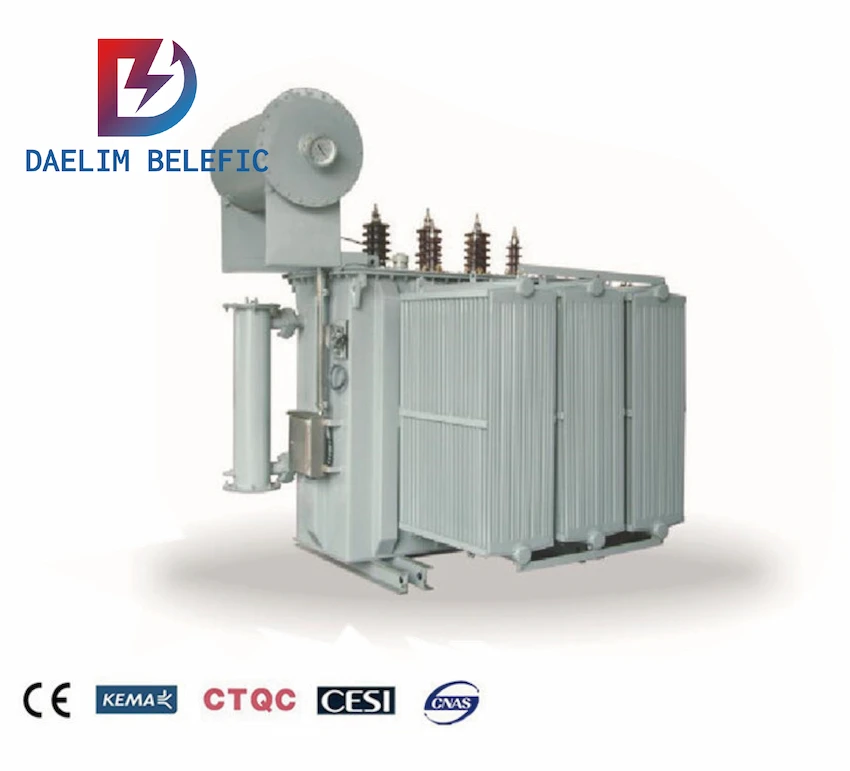
Liquid-filled transformers, also known as liquid or wet-type transformers, are power converter systems different from dry transformers. These transformers use non-conductive dielectric liquids to lower the core’s temperature. These liquids are usually in the form of flammable mineral oil. Yet, some systems operate on alternative oil coolants such as hydrocarbon and silicone.
Medium voltage oil filled transformers are much cheaper and have a much longer lifespan of about 25 to 35 years. This makes this system more practical for medium and high-voltage power conversion and distribution setups.
The mechanism’s use of flammable mineral oil has been known to compromise the safety of the people and the environment. Nonetheless, newer transformer equipment uses safer and environment-friendly oil variants such as silicone and hydrocarbon.
If you are looking for high-performance, high-efficiency, and safe liquid transformers, you can place your trust in Daelim. Daelim as a oil filled transformer manufacturers having 15 years of experience in manufacturing high-quality electrical equipment, Daelim knows the products you need. You also don’t need to worry about safety, as the best oil filled transformer manufacturers should constantly complies with ANSI, IEEE, CSA, and IEC standardization requirements, and Daelim have these certificates
When choosing the best transformers, always look for Daelim, the trusted oil filled transformer manufacturers brand for highly efficient and effective electrical equipment.
Voltage transformers currently come in two types: dry type transformers and liquid-filled or wet-type transformers. While both of these operate similarly, these are distinct in their mechanisms and applications. You should first understand how each of these functions, as these matter how each should be applied.
A detailed explanation of the difference between dry-type transformers and oil-immersed transformers
What makes each of these transformers different from each other? We laid down general information about each transformer type and comparative features and functions that make them distinct.
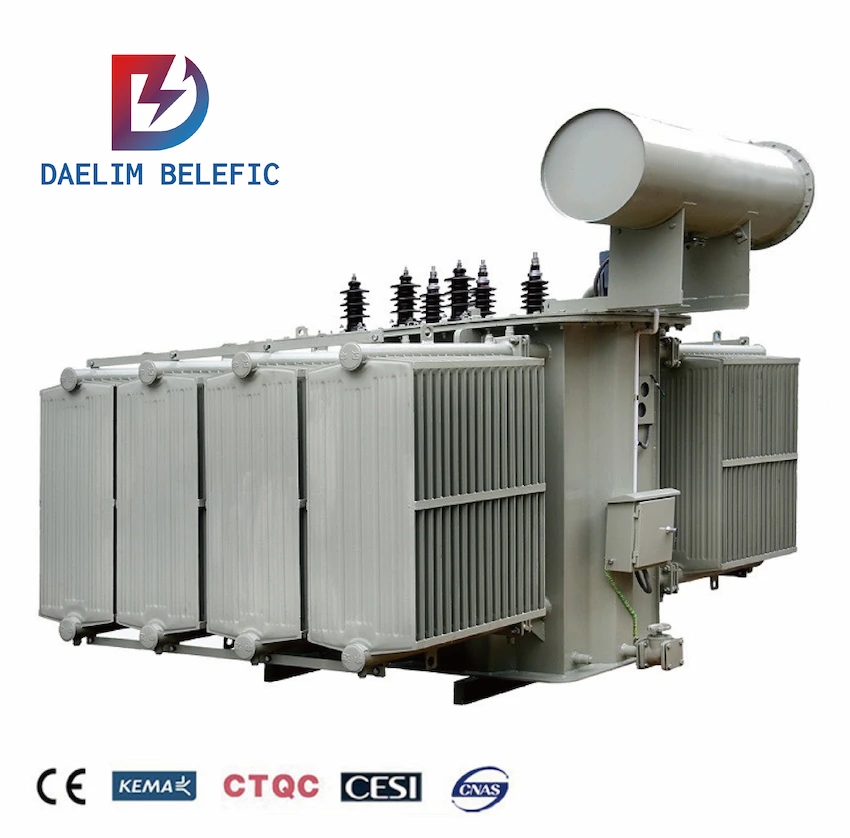
As the name suggests, liquid-filled transformers use dielectric fluid to lower the temperature of an often heating transformer. It proved to be highly efficient in cooling down the equipment much faster than in dry type transformers.
Medium voltage oil filled transformers are considered high-performance voltage converters due to their performance at higher ratings. Liquid transformers, in this case, function at medium and high-voltage operations. Including medium voltage oil filled transformers and high voltage oil filled transformers.
In addition, this mechanism is also appealing for smaller power plants and generators due to the transformers’ small-scale and less power in converting voltages. Whether it is a 750 kVa or 2500 kVa liquid filled transformer, it usually covers half the space of dry transformers.
Liquid transformers commonly make use of one specific dielectric fluid since their invention: mineral oil. Liquid transformers are also known as “oil-filled transformers,” mainly due to the use of mineral oil throughout history. In addition, power plants prefer this kind of oil as it is cheap but of high performance.
Nonetheless, the use of mineral oil is risky as it is flammable. This paved the way for safer alternative fluids, particularly synthetic oils.
Currently, the IEEE recommends that the fire point for mineral oil be at 165 °C. This is significantly lower than what is recommended for synthetic oil, which is at 343 °C.
Causes of Oil Leakage in Oil-immersed Transformers
Not all kinds of liquid-filled transformers operate with the same cooling system. The cooling method can also vary depending on the mechanism’s power capacity. Here are the standard cooling methods in liquid transformers.
While industries commonly use dry transformers more than wet-type equipment, liquid transformers have advantages in specific applications.
For one, medium voltage oil filled transformers typically cover half the area covered by dry transformers. A typical 750kVa dry type transformer, for instance, covers an area of about 21 square feet. On the other hand, a 2500 kva oil filled transformer measures 44 square feet. A power plant can save more space at the same capacity needed to power up various loads with the latter.
In addition, medium voltage oil filled transformers generate less noise during operations than filling transformer with nitrogen. The sound of dry industrial dry type transformers usually measures around 64 to 70 decibels, which is at the same range as an operating factory. Meanwhile, the decibel levels of wet-type transformers are significantly lower at about 45 to 58 decibels.
There are also advantages in the use of newer and safer dielectric fluids for transformers. Newer models have strayed from mineral oil and have since allowed liquids with fewer environmental risks.
Lastly, scrap and used medium voltage oil filled transformers are also valuable for recycling. While you can recycle both dry and liquid converter parts, you can also reuse the fluid in 2500 kva oil filled transformer.
While liquid-immersed transformers benefit industries and power plants, some issues also need to be addressed.
For instance, there are safety and environmental issues that come with some models of liquid-filled transformers. Older units still use mineral oil, which can be highly risky for the safety of industries that use it.
But, the IEEE has set standards on the use of various types of dielectric oil for transformers. Oil filled transformer manufacturers such as Daelim and industries that use this equipment should comply with this standard. Moreover, these types of equipment require supplementary protocols and continuous maintenance to ensure protection against potential fire and other risks.
4 Methods of Transformer Drying Treatment
Another notable disadvantage of using liquid-filled transformers is their risk for indoor applications. This equipment is not intended for indoor use due to fire risks and exposure to fluids and toxic gases. Because of this, indoor industries use dry transformers more.
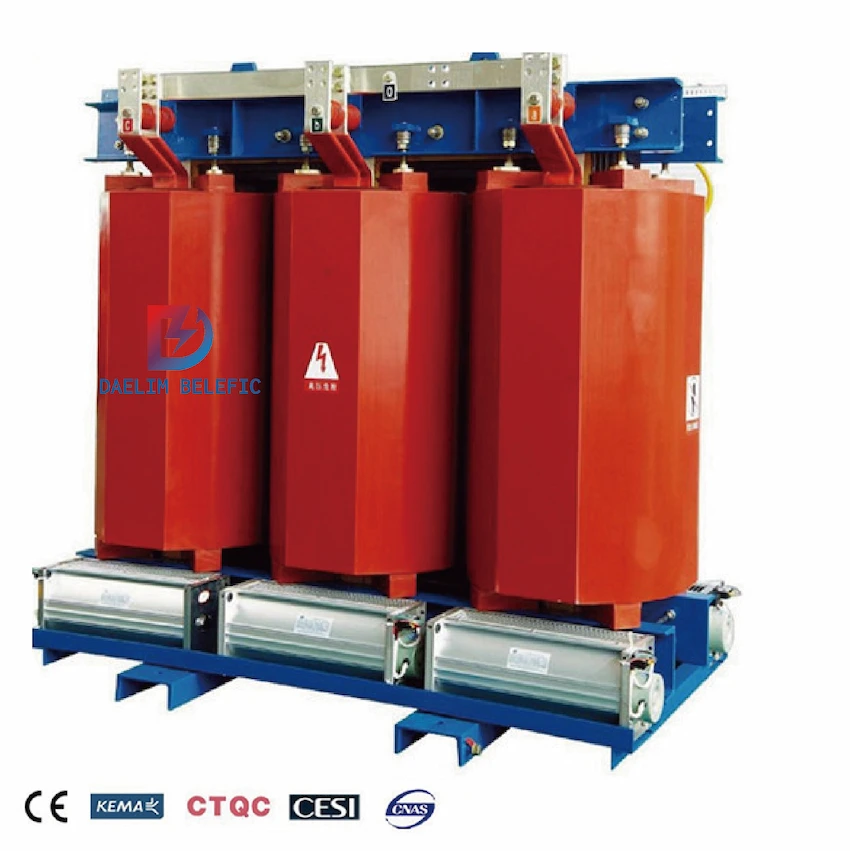
People are more familiar with dry type transformers, even in publicly accessible indoor and outdoor industries. These do not utilize fluids or oil similar to what wet-type transformers use. Instead, these equipment rely upon air circulation and ventilation, as well as electrical insulation.
One distinct feature of these mechanisms is the winding’s layer of epoxy resin coating. This layer helps against exposure to dust particles and rusting, which can affect the operation of the equipment.
Unlike medium voltage oil filled transformers, dry type transformer converters operate on a lower to mid-range capacity. This does not mean that these do not perform well. Many indoor and outdoor businesses, industries, and power plants utilize this equipment. Nonetheless, there are considerations in using these mechanisms.
For instance, dry-type transformers cover double the space of typical liquid-filled transformers. Using the above example, a 750kVa dry type transformer requires a 44 square feet space. This means that setting up such equipment will not work in a relatively small area where medium voltage oil filled transformers could usually fit.
Moreover, these types of equipment are noisier than their liquid-filled counterparts. Using the example in the preceding discussion, dry type transformers produce sound at a 64 to the 70-decibel range. To give you a perspective, an air conditioner installed at 100 feet, combined restaurant chatter, and running vacuum cleaner operates within the 60 to the 70-decibel range.
What is The Alarm Temperature of The Dry-type Transformer?
Dry type transformers also vary according to their intended application and compatibility in various environments. Listed below are the following types of dry transformers:
One of the obvious distinctions between oil filled transformer vs dry type is their capacities. In this case, dry type transformers nearly support every indoor and outdoor industry and business that helps low and medium-range voltage. People usually choose medium voltage oil filled transformers.
These transformers are also less dangerous than the other transformer types that require the use of toxic fluids. Unlike liquid filled transformers, this equipment can support indoor installation. It adds to the appeal of dry type transformers in businesses as these do not harm the public nor the environment.
Furthermore, dry-type transformers also require less rigorous maintenance than their wet-type counterparts. But, this does not mean you should do cleaning, repairs, and routine checks for this equipment less frequently. These units can still malfunction due to faulty wires, accumulation of dirt and other particles, and similar issues that may affect their operations.
Dry-type Transformer Model List
Lastly, these types of transformers are generally tough because they can withstand unusual electricity and natural conditions. This is especially the case for PVE and Cast Coil Transformers with a high tolerance to extreme environments. Some products of the latter type can even resist short circuits and voltage surges.
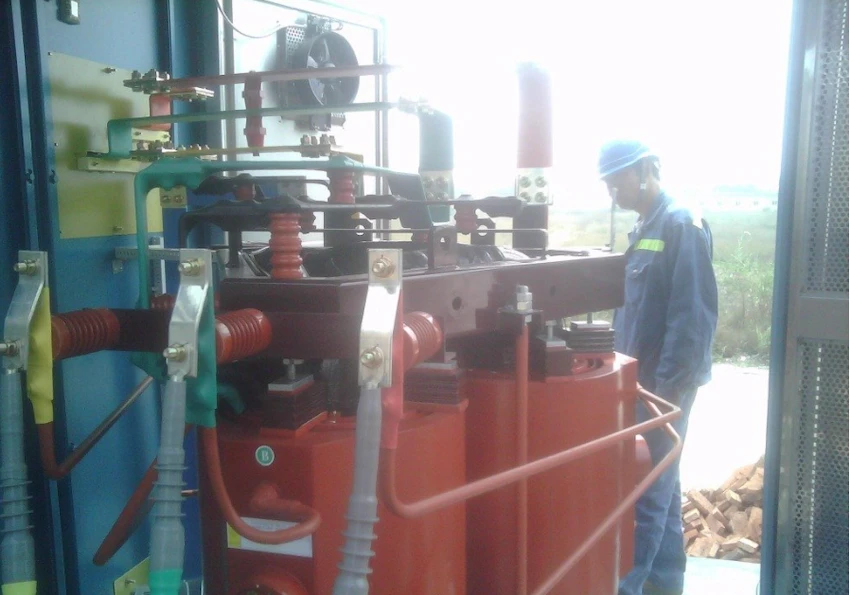
Businesses and industries may find the costs of these dry-type transformers more expensive than their liquid filled transformers counterparts. Installation space is also a problem since this equipment requires more space than liquid filled transformers.
Since dry type transformers operate on the lower to mid-range power scale, these equipment are also ideal for small-scale operations and applications. These will not support loads that require vast amounts of power.
Aside from these, while these transformers are intended for indoor and outdoor applications, their noise may disrupt workers. If you wish to install one of these pieces of equipment indoors, consider choosing the best area where it will not annoy people due to their noise.
Wiring method of Dry-type Transformer
Lastly, while maintenance is less rigorous than medium voltage oil filled transformers, routine checks should also be done from time to time. But, yearly repairs and inspections may require shutting down the system for some time.
Liquid filled and Dry type transformers are similar in their intended purpose but have many distinctions in their features, mechanisms, and applications. Here’s a breakdown of the essential similarities and differences between these two types of transformers.
Medium voltage oil filled transformers are intended for outdoor installation due to their mechanism and fluid use, posing specific health and safety risks. This occupies less space compared to a dry type transformer counterpart with a similar capacity.
Meanwhile, dry type transformers are excellent in both indoor and outdoor installations. Nonetheless, you should first check the best spot to install these transformers as the noise may disrupt the normal operations of an industry. These require more space than a liquid filled transformers counterpart.
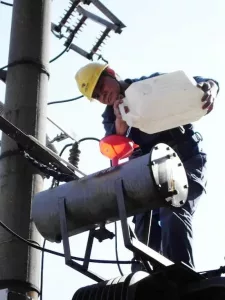
2500 kva oil filled transformer lower their operating temperature using dielectric fluids. These include conventional but potentially harmful mineral oil and synthetic oils such as silicone. The cooling system may vary depending on the mechanism where oil circulates and dissipates.
On the other hand, dry-type transformers use natural air ventilation and circulation instead of transformer fluids.
Given the capacity and mechanism of each transformer type, dry-type transformers have a wider range of internal and external applications. These include places accessible to the public, such as schools and hospitals. Cast-Coil Transformers are the most powerful among the four kinds of dry-type converters due to their function in more demanding conditions.
2500 kva oil filled transformer is also highly functional, albeit on outdoor applications that require more power output for the load. These include large industrial complexes and power plants.
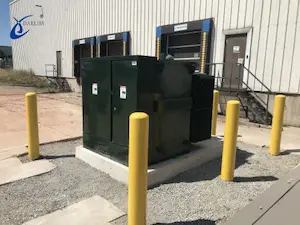
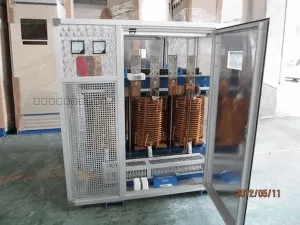
Liquid-filled transformers are riskier for operations because of mineral oil that could pose a fire hazard. It could also produce toxic emissions that could bring an adverse effect to public health and the environment. On the other hand, dry type transformers are much safer to use.
Transformer fluids are highly essential for liquid transformers to properly function, but what exactly are these fluids? Here’s a list of popular oils and fluids for wet-type transformers:
Mineral oils have historically been used as a transformer fluid. Under this is Naphthenic crude oil, a substance that helps thermal distribution along with the transformer parts. On the other hand, the waxy Paraffin crude oil has a low electron loss and high viscosity rate. While both fluids form sludges, the former does not affect the system much more than the Paraffin.
By their nature, mineral oil came from petroleum, the same material used for gasoline. This substance is highly flammable, compromising public health, and poses severe hazards to the environment. Because of this, synthetic oil was introduced as a much safer alternative.
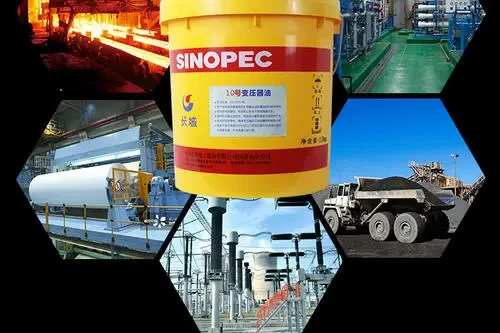
Synthetic oil refers to various fluids that are seen as alternatives to mineral oil. More biodegradable pentaerythritol and esters, for instance, are more expensive yet highly effective to support transformers. They even have a high fire point rate of at least 300 °C.
Synthetic silicone and fluorocarbon fluids are also seen as great alternatives, albeit these are less environment-friendly materials.
A 2016 study in the Journal of Nanotechnology explored the potential use of nanoparticles for transformer oil. The study utilizes three types of nanoparticles of varying capabilities to conduct electricity. But, this inquiry is yet to be determined.
Liquid-Filled Transformers operate on a much higher voltage capacity. This means that they can support power loads that require a much higher voltage. In this case, liquid transformer mechanisms are present in power and distribution transformers.
For power transformers, the capacities may depend on their sizes. For instance, smaller transformers usually operate at 10 MVA, with a 145 kV maximum recommended voltage level. medium voltage oil filled transformers are a step up and can work between 30 MVA to 100 MVA. Larger units offer the greatest power, even exceeding 100 mVa and 345 kV in terms of performance.
Liquid-filled transformers, much like every voltage transformer, require maintenance and routine check-ups from time to time. Various degrees of maintenance checks can be done at different times of the year to ensure the proper functioning of the transformer. Here are some tips for maintaining liquid transformers.
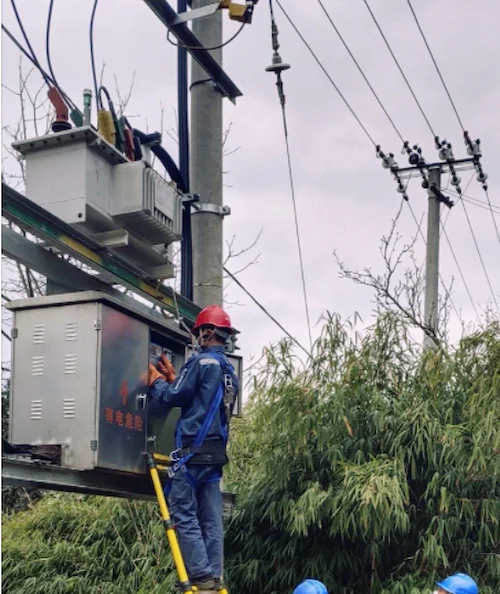
Transformer oil refers to fluids to cool down the windings and core inside a liquid transformer. Such fluids may include mineral oil and synthetic oils such as silicone and ester.
Three functions and performance requirements of transformer oil
Liquid transformers are usually filled with oil to aid in the lowering of temperatures inside the transformer. The windings and core of the equipment tend to heat up, but through the use of these fluids, damage from overheating will be avoided.
Generally, transformer oils are made from petroleum, a known carcinogenic and flammable substance. There are also instances where nonflammable polychlorinated biphenyls (PCBs) are used for transformer oil. But, the latter led to poisonous substances such as dibenzofurans and chlorinated dioxins.
There are cases of actual damages due to PCBs. In a 2016 case study in Bangladesh, a 16-year old woman was reportedly exposed to PCBs, damaging her liver and nervous system. This shows the potential damage of transformer oils when exposed to humans.
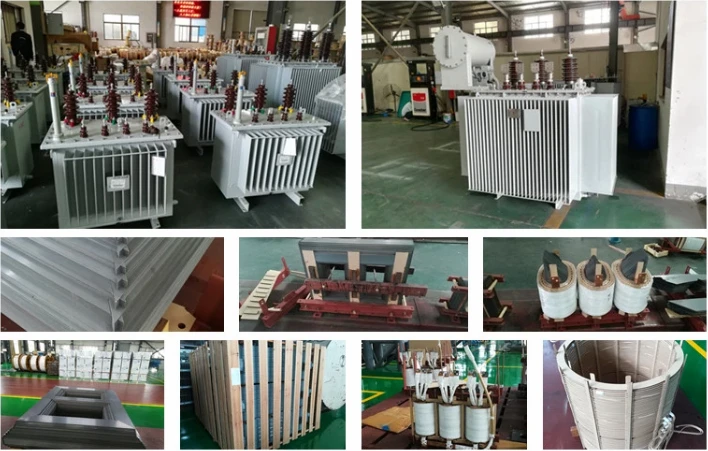
Oil leakages in transformers can be disastrous. For one, it can lead to damages in insulation as oxygen and moisture penetrate the transformer. It can also bring highly toxic lead material (from paint) that can contaminate the groundwater, affecting the water supply. Lastly, it can lead to a sudden release of nitrogen. If not immediately addressed, the transformer may set on fire or explode.
Liquid-Filled Transformers are highly vital equipment for high-voltage applications such as power plants and large industrial areas. Nonetheless, whether you use mineral oil or much safer synthetic fluids, it’s essential to regularly conduct repairs and maintenance checks. Such problems can pose a severe risk to the workers and the community if issues are not properly addressed.
When you need to find more than just existing transformers, Daelim’s Transformer Service Center can help you design and produce distribution transformers that meet your unique needs.
We have our own factory and a professional team of engineers, which can design and modify application requirements that meet all your conditions.
Download Resource
After filling in the contact information, you can download the PDF.